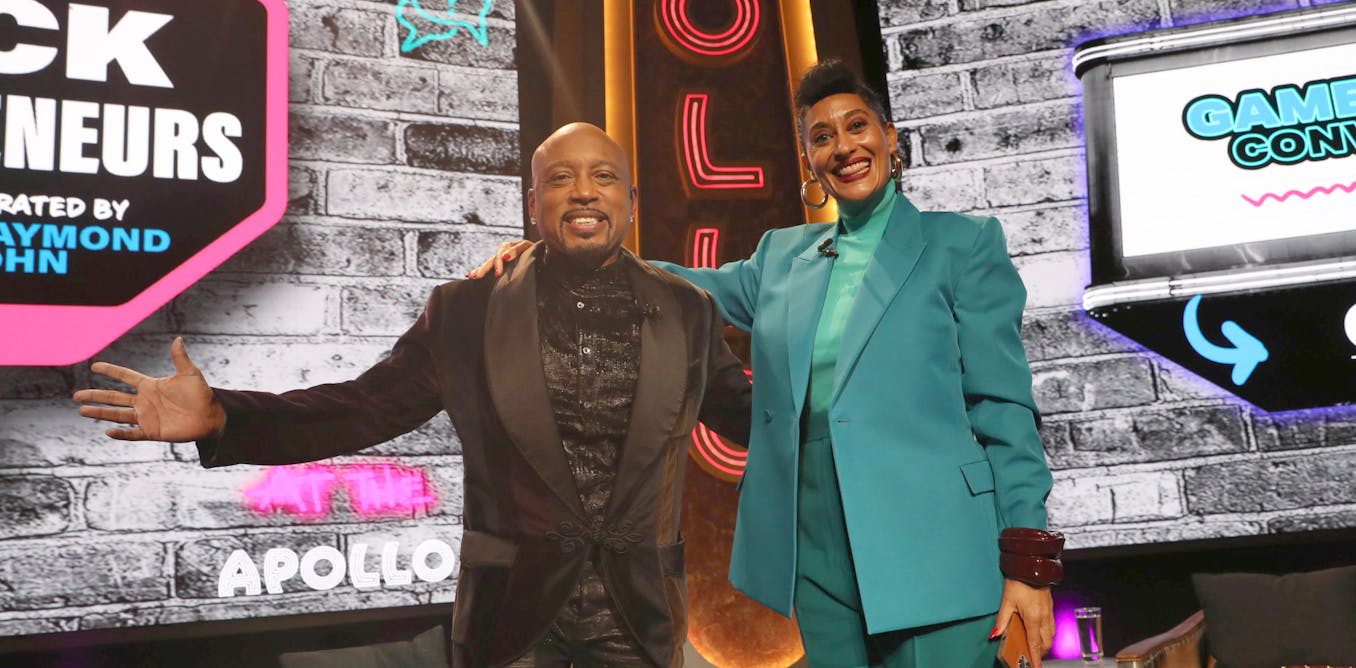Politics
Trump’s raised fist is a go-to gesture with a long history of different meanings
In the frenzied moments when Secret Service agents surrounded a bleeding Donald Trump at a Pennsylvania rally on July 13, 2024, trying to hustle him offstage to safety, Trump – whose ear was grazed by a would-be assassin’s bullet – raised his fist in the air.
“Fight! Fight!” he appeared to be saying, pumping his fist hard.
It was an image, and a gesture, destined for the history books.
But if the situation was unprecedented, the gesture was hardly new to Trump, the former president and presumptive GOP presidential nominee. His raised fist has been part of his public image since the 1990s.
Earlier in the year, when Trump exited the building where he had been found guilty of 34 felonies on May 30, he waved and raised a clenched fist to those who had gathered outside.
He had made the same gesture when surrendering to New York authorities after his indictment in the case in April 2023. And at the end of a June 2024 campaign stop at a church in Detroit, he stood in front of an illuminated cross and two American flags and raised his fist again.
I’m a cognitive scientist who studies communication and writes about the meaning of gestures and how they are interpreted.
The raised fist is one of the most interesting of these because of its long and varied history: It’s been used by fascists, socialists, communists, Black Power advocates and even golfer Tiger Woods.

A loaded gesture?
The raised fist has been employed by a wide variety of groups for several different purposes. In the early 20th century, for example, it was associated with socialism, communism and labor unions like the Industrial Workers of the World. In these contexts, it was typically viewed as a symbol of solidarity with others who shared their views.
In the 1960s, however, the raised fist became associated with the Black Power movement. One of the iconic – and controversial – images from the 1968 Olympic Games shows athletes Tommie Smith and John Carlos, who had won medals in the 200-meter event, raising gloved fists over their heads as the U.S. national anthem played.

Forty-five years later, particularly after the 2014 protests in Ferguson, Missouri, and followed by the 2020 murder of George Floyd, it became a potent symbol of Black Lives Matter protesters.
But the gesture has also been adopted by the far right, with the Aryan fist becoming a symbol of white pride during the 1980s.
In many respects, the raised fist has become a generalized gesture of defiance that has been employed by groups as diverse as the Occupy Wall Street movement in 2011 and students protesting education budget cuts in the Philippines that same year.
The gesture is still seen as transgressive. In 2016, Black female cadets at West Point raised their fists for a photo, and this led to an inquiry by the school, although no disciplinary action was taken.
West Point’s superintendent, in a letter to the cadets, wrote, “We all must understand that a symbol or gesture that one group of people may find harmless may offend others. As Army officers, we are not afforded the luxury of a lack of awareness of how we are perceived.”
Fist pump and other variations
Analogs of the raised fist are common in popular culture. The gesture is related to the fist pump that golfers like Tiger Woods frequently engage in. It is also related to the “Success Kid” meme – showing a baby at the beach with a sandy fist and a defiant face – popular on social media in the early 2010s. This could be viewed as a truncated version of the raised fist, just as the fist pump is an expanded version of the gesture.
It’s unusual, but not unheard of, for gestures to undergo fairly major shifts in their meaning. The V sign, made with index and middle fingers raised and separated, was popularized in the early 1940s as standing for resistance and ultimately an Allied victory in World War II. But a generation later, it was co-opted by those opposed to U.S. involvement in the war in Vietnam and became the peace sign.

Trump and the raised fist
Once public figures make a symbol their own, they tend to employ it habitually.
Richard Nixon, for example, made frequent use of a two-handed “V for victory” gesture during his political career. He even used it in contexts when it seemed wildly inappropriate, such as when, humiliated after his 1974 resignation, he boarded the helicopter that flew him out of Washington and turned to flash those two raised hands and fingers.
Donald Trump has employed the raised fist gesture for decades, and in a variety of contexts. He used it, for example, as a gesture of celebration at the 1990 opening of his Trump Taj Mahal casino and hotel in Atlantic City. But he has also employed it as a symbol of defiance, as he did during a press conference at which he threatened to sue the New York Post in 1994.

As president-elect, he raised a fist in a 2016 Christmas tweet. Perhaps most famously, he raised his fist in triumph during his inauguration in 2017. And during his presidency, he often used the gesture, such as when he arrived in Nashville for a presidential debate in October 2020, raising his fist to service members once he got off his plane at Berry Field Air National Guard Base.
Since public appearances by Trump typically draw mixed crowds of supporters and detractors, his use of a raised fist provides a potent message for both groups. It can function as a gesture of solidarity for those who are with him, and one of defiance against those who oppose him. In this way, Trump’s raised fist is like a Rorschach inkblot, since it allows people to interpret his message according to their own ideological preferences.
Other people in Trump’s orbit have also made symbolic use of the raised fist. Before entering Politics, Trump made at least 40 appearances on Howard Stern’s radio show. When Stern moved his program to SiriusXM in 2006, he initially employed a clenched fist as his logo to emphasize the subversive nature of his programming. And there is even a video of a fist-pumping Pauly D and The Situation from “The Jersey Shore” at the Trump Taj Mahal in 2010.
Supporters of Trump, such as U.S. Sen. Josh Hawley, a Missouri Republican, have also appropriated the gesture. On Jan. 6, 2021, Hawley raised a fist to show his support for the demonstrators who were converging on the U.S. Capitol – right before he skittered down a hallway in flight from them.
On the heels of Trump surviving the assassination attempt, will delegates at the Republican convention, where he will formally become their nominee for president, adopt this gesture as well?
This is an updated version of a story first published on July 11, 2024.
-

 Politics9h ago
Politics9h agoWhy Trump Actually Needs Mexico
-
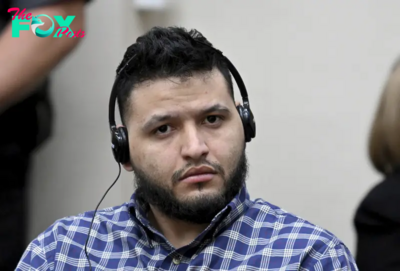
 Politics9h ago
Politics9h agoMan Convicted of Killing Laken Riley Sentenced to Life in Prison Without Parole
-
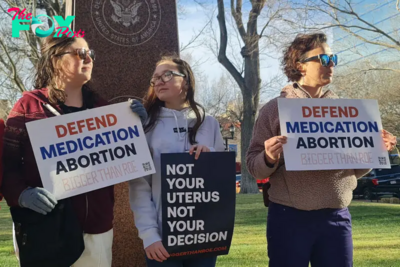
 Politics15h ago
Politics15h agoHow the Biden Administration Protected Abortion Pill Access—and What Trump Could Do Next
-

 Politics15h ago
Politics15h agoWhy Trump’s Tariffs Could Raise Grocery Prices
-
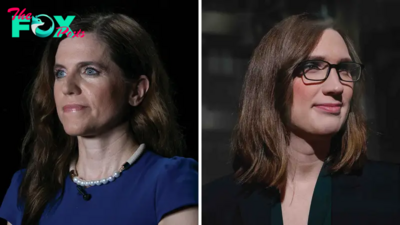
 Politics1d ago
Politics1d agoThe First Trans Member of Congress Expected Pushback Like Mace’s Bathroom Rule
-
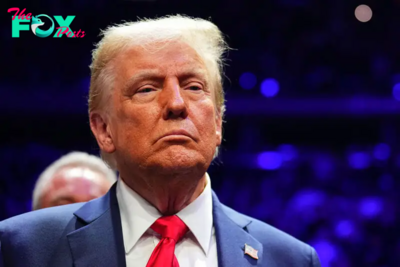
 Politics1d ago
Politics1d agoNew York Prosecutors Oppose Dismissing Trump’s Hush Money Conviction
-

 Politics1d ago
Politics1d agoWhite House Christmas Tree Is a Symbol of Resilience for Hurricane-Hit North Carolina Farms
-
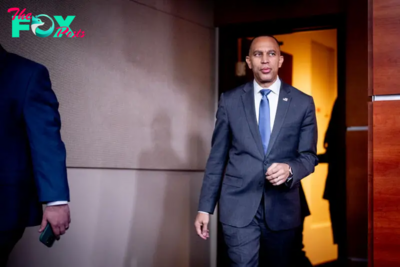
 Politics2d ago
Politics2d agoHakeem Jeffries Wins Reelection as House Democratic Leader Despite Party’s Losses



